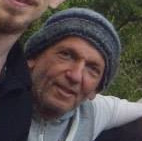 It combines diverse healing traditions — Western psychotherapy and self-improvement, Tibetan Buddhism, natural hygiene, yoga, family systems therapy, plant shamanism, trauma therapy. None of this knowledge is new, but their combination and the overall focus of the work are.
It combines diverse healing traditions — Western psychotherapy and self-improvement, Tibetan Buddhism, natural hygiene, yoga, family systems therapy, plant shamanism, trauma therapy. None of this knowledge is new, but their combination and the overall focus of the work are.
The synergies between these practices allow serious students to take their self-evolution to the next level — to uncover and release the disturbing vibrations of traumatic incidents that usually remain hidden from awareness.
There will be an overview of trauma or wounding, as seen through the prisms of various therapeutic and spiritual systems. By understanding its unique energetic characteristics, we can identify the specialized knowledge that is required to work directly with it.
The word healing is not meant as ‘curing’ or making the problem disappear. It is closer to the ideas of individuation and personality integration in analytical psychology or the ideas of presence and mindfulness in meditation systems — a neverending but always creative dance of light and shadow.
At the center of this healing cluster is the work with a psychedelic medicine. The emphasis here is on coaching individuals to develop a practice by taking small amounts and building a two-way rapport with the medicine. This and a ceremonial approach are the indispensable foundations of this work that we received from traditional cultures.
We prepare for this work on several levels:
— with a completion exercise. This is also known as karma yoga. Completing cycles, tying loose ends, frees up energy and vitality for the demands of deep healing work.
— with an inquiry into what we are up against in our evolution. What are the areas of resistance? What are the recurring or persisting unwanted manifestations in my life? What is its main theme at this stage, what is my personal myth? This is done through conversation, Jungian-Senoi plant-incubated dreamwork, journaling assignments, art therapy. The outcome is that we approach the ceremony having ‘activated’ or ‘incubated’ the material that is up for transformation.
— with an investigation of the forces at work in our family system and our culture of origin. The heavy energies that scare us away from transformation are often held in those collective morphic fields.
— with deep detoxification through a short fast (water fast). We break the fast prior to the ceremony. Fasting ‘resets’ our counters to near zero for all our daily toxic companions: coffee, tea, tobacco, alcohol, sugar, meat, medication, etc. It helps us and the medicine connect more easily to the deeper layers, with less suffering and less getting off-track. Hatha yoga, kundalini yoga and chigung are also used to generate more vitality for the work.
— with a combination of four exercises that help develop the willingness and capacity to feel anything fully, without resistance. The polarity between resisting and allowing feeling becomes a crucial subject of study when we deal with the heavy vibrations of trauma. Specific technical skills are needed to take our experiential healing work to that level. Diverse traditions like Tibetan Buddhism and the human potential movement offer tools that closely match the skills of pendulation and titration decribed by trauma expert Peter Levine.
This system is meant to be learned and then used. It is intended as a bridge between subcultures.
For eclectic psychotherapists, it introduces the principles of collaborating with psychedelic medicines and weaving a therapeutic intervention into their power, a forms of shamanic healing.
For participants in traditional ceremonies, it facilitates the shift from having ‘experiences’ to having a practice. It introduces the skills of asking and of receiving answers as subjects of rigorous study. It offers tools for going deeper.
For people who only know psychedelics in the context of partying or experimenting, it introduces a new framework in which the power of those substances is harnessed to a positive intention according to specific rules.
